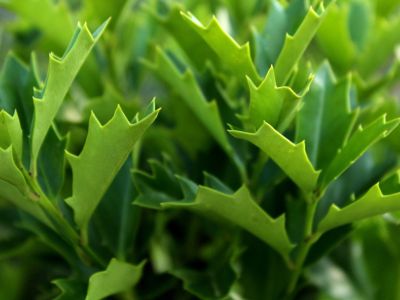Oak Leaf Holly Information
The Red Holly Series of cultivars feature bronze to burgundy new leaf growth. This characteristic, combined with their attractive form, makes the plants excellent ornamental specimens for the landscape. Oak Leaf is a member of the series introduction and has become a popular and easy-to-grow plant. This large shrub to small tree is self-pollinating, resulting in orange-red, pea-sized berries. To answer the question, “what is Oak Leaf holly,” we need to understand where it came from. The plant came from an open cross and it is not sure who the parent plant might be; however, it was selected to become part of the Red Series by nurseryman Jack Magee in the mid-1990s. The highlight of the Red Series was the beautifully colored new growth. In Oak Leaf holly’s case, the plant is also a hermaphrodite and does not need a male plant to set the glossy fruits. It can reach 14 to 20 feet (4 to 6 m.) and about half as wide, forming a lovely conical to pyramid shaped plant. Leaves are shiny with 3 to 5 serrated margins. Berries are ornamental but also attractive to birds as food.
How to Grow an Oak Leaf Holly
Oak Leaf holly needs full to partial sun in rich, well-draining soil that is slightly acidic. The holly tolerates almost any soil type as well as periods of drought. Keep the soil moist but not boggy. Infrequent, deep watering promotes a healthy root system. It is moderately cold hardy and may be grown in United States Department of Agriculture zones 6 to 9 but provide protection from strong wind. Hollies rarely need feeding. A balanced food or acid lover formula applied once in early spring is sufficient. The plant looks simply amazing when used in a hedge and responds well to frequent shearing. Growing Oak Leaf hollies in a group provides evergreen elegance combined with privacy hedge sharp leaves.
Additional Oak Leaf Holly Care
Hollies are stoic plants that are not bothered by much of anything. Oak Leaf holly has some sensitivity to several fungal diseases, such as powdery mildew and leaf spots. Combat with a registered fungicide. In soils with high pH, conditions such as chlorosis may occur. Add sulfur to soils that are high in pH to lower it and correct the condition. Pests are not much of a problem. You may find scale, whiteflies, spider mites and holly leaf miner. Insecticidal soaps or Neem oil are useful natural controls. Leaf drop and leaf scorch may occur where the plant is exposed to southern light or incorrect watering or fertilizing practices are used. For the most part, these hollies are fun plants in the landscape. You can leave them alone and enjoy their natural form, or shear them heavily into imaginative forms or professional hedges.
